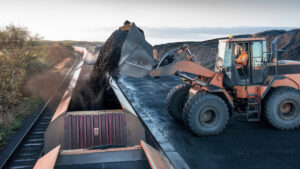Silent but deadly, stamp duty costs in this country are about as funny as a fart in an elevator.
Now Aussie home buyers have to reckon with a stamp duty which is some six times more than it was just a generation ago, according to cheerful new research which wants to quantify the impact of stamp duty on Australia’s housing market.
The findings of the joint project from E61 Institute and led by Angus Moore, senior economist at PropTrack, is no love letter to the onerous impost which they conclude is skewering the Aussie dream for many.
They say the downpayment direct to the government coffers is essentially “a significant upfront cost and a barrier to entering the housing market… impact(ing) how people buy and sell and where they choose to live.”
The study comes as new Reserve Bank of Australia (RBA) research highlights just what a collective whack Australian borrowers have copped since the first of a dozen hikes to the official cash rate.
The RBA says the collective quarterly national interest bill to be squared by mortgage holders has jumped by more than 130% over just the past two years.
In the final three months of 2021 we coughed up just $7.4bn.
A mere seven quarters later – in the last months of 2023 – we paid $17.1bn in credit payments.
Today, the bank says, interest repayments alone are at a record $190 million a day. In the final quarter of 2021, interest was at $81 million a day.
Stamp of failure
Meanwhile, Mr Moore hopes the government will embrace the data which he reckons might help someone better identify alternative solutions.
“Stamp duty is very costly. Home buyers in Sydney and Melbourne must spend half a year’s worth of full-time income, a burden that has increased enormously compared to a generation ago.”
Moore reckons it’s an inefficient tax because it discourages people from moving to homes that suit them.
“While the rise has largely been incidental, rather than an intentional increase in tax rates, stamp duty reform is critically needed to allow the property market to operate more efficiently.”
Key findings:
• Stamp duty costs around six months take-home income in Sydney and Melbourne, which has doubled since the 2000s and grown as much as 6-fold since the last generation.
• In Sydney, stamp duty on a median-priced home is equivalent to 6 months of full-time post-tax income. That is 5.4 times higher than it was in the early-to-mid 1980s.
• In Melbourne, buyers need the equivalent of 6 months of full-time post-tax income – a whopping 6-fold increase from four decades ago – the largest increase of any state.
• Housing costs are reportedly holding people back from moving homes, downsizing, changing jobs and having children.
• The most popular housing policy for state governments is to abolish stamp duty.
Research Manager at the e61 Institute, Dr Nick Garvin, said: “Our research also highlights the indirect impacts of stamp duty on other parts of people’s lives including whether or not they change jobs, and when they decide to have children.
According to the research, to come up with the stamp duty for your new capital city home these days, you’ll be needing months of take-home income standing by (Figure 1, just below).
“
Stamping out opportunity
“This cost has covertly doubled since the 2000s,” according to Moore.
“There is no specific policy change to blame, just housing prices out-pacing income as well as stamp duty bracket creep. State government budgets have benefited from the growing tax revenue.
But for taxpayers, the toll is more than just time and money.
According to survey data taken from the study, housing costs have caused one quarter of Australians under 40 to delay changing jobs.
And it’s stamp duty which has caused more than one in five 30-40 year olds to delay having kids, and are preventing people of all ages from moving homes.
Dr Garvin reckons overhauling the current stamp duty system has the potential to alleviate these pressures on individuals and the economy more broadly.
“Housing affordability and availability is without a doubt a challenge of our time. Governments and policymakers must consider the unpopularity of stamp duty, and the indirect impacts stamp duty has on various other parts of the economy and people’s lives,” Dr Garvin said.
Positive on negative
Meanwhile, the Federal Treasurer Jim Chalmers has told weekend telly that the 7-8% of Aussies who own an investment property needn’t worry about any tweaks to negative gearing and capital gains.
Both Prime Minister Anthony Albanese and Opposition Leader Peter Dutton face pressure to revisit tax breaks on investment properties.
The Greens are proposing limiting negative gearing rules to a single investment property, but Dr Chalmers has nixed all of that talk.
“That’s not something that we’re proposing, not something that we are considering, not something that we are working up,” he told Sky News on Sunday.
Former NSW premier Dominic Perrottet has called for negative gearing reforms to be considered as part of this wider debate about how tax changes could address housing affordability.
The post Stamp duty now costs your average Sydney homebuyer half a year’s income appeared first on Stockhead.























+ There are no comments
Add yours